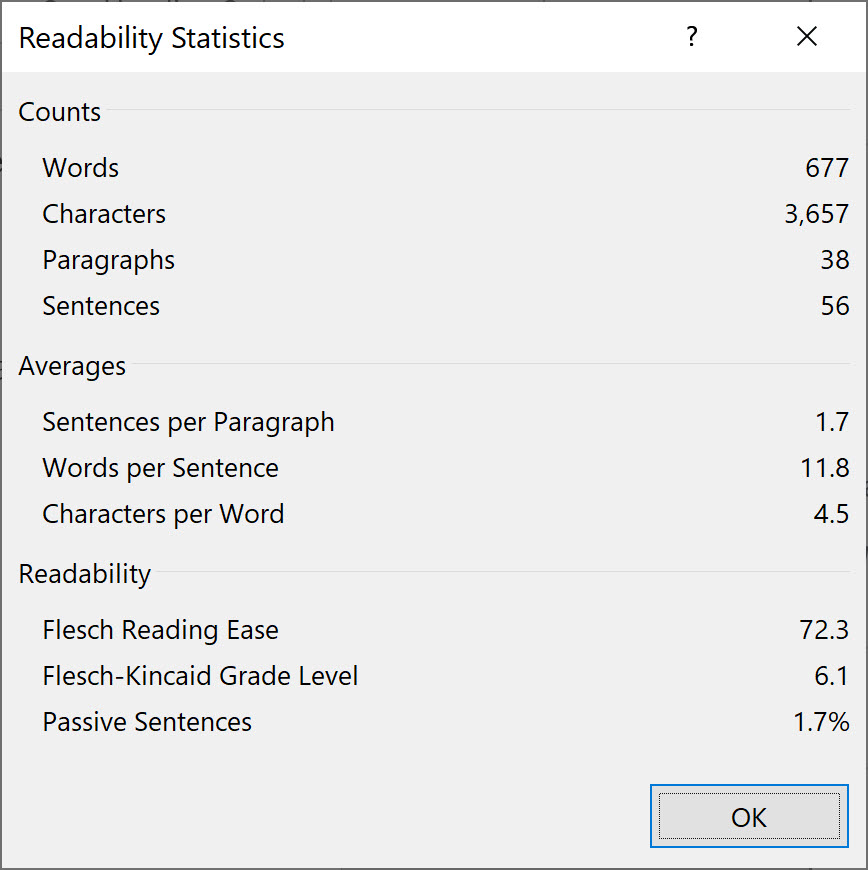
Last week I went on a Plain Language course. If you were following me on Twitter, you’ll know I was feeling a bit nervous about it. I find any type of “course” difficult. I don’t like being “trapped” and I prefer to learn things at my own pace. Having said that, it went really well.
What’s the point?
How you speak and write can have a big impact on how your message is received. I work for a university, which has a large number of overseas students and staff, where English is not their first language.
A significant proportion of our user base need accessibility tools, and a similar proportion use them by choice.
Even when English is your first language, it can be difficult to understand some of the rubbish that gets produced.
Isn’t it just about dumbing down?
Some people love flowery bullshit language. I hate it. I’m not the best at reading, so every unnecessary word requires parse time, and makes it easier for me to lose my concentration.
My problem is similar to that faced by someone who doesn’t have English as a first language, or someone using accessibility tools. There is a lot of effort spent dealing with words that add no value to the meaning.
Know your audience!
You always have to consider your audience when writing and speaking. There is a difference between writing a legal document, an academic paper and instructions about how to log into the WIFI.
My statistics tell me that about 45% of people reading this will be from India. About 43% from the USA, and the remaining are made up from the rest of the world. I have no idea about the language skills of the audience in those locations, but I’m guessing they don’t track well with someone born 50 years ago and raised in the Midlands, UK. 🙂
I’ve learned through my years of presenting, that often “less is more”. Try to get as much meaning in as few words as possible. I wrote a series of Public Speaking Tips, where I wrote about my experience of international presentations. I’ve tried to keep that in mind when I’m doing my YouTube videos too.
In short, write in a style that is acceptable to your audience!
What are “the rules”?
There’s a neat summary of some of the points covered by the course here.
It’s mostly about controlling your word selection, sentence size and use of active and passive verbs. There is also some information about how to structure communications to make sure the main points and actions are obvious from the start. It’s similar to what I wrote about in my post called The Art of Miscommunication.
The course doesn’t focus on punctuation or grammar. It doesn’t remove personality from your writing. It’s all about making yourself understood.
What tools are available?
If you are using Word or Outlook, you can use the built-in tools to help.
For Word:
- Go to “File > Options > Proofing”.
- Select the “Check grammar with spellings” and “Show readability statistics” options.
- Click the “OK” button to exit.
For Outlook:
- Go to “File > Options”.
- Select “Mail” and click the “Spelling and AutoCorrect” button under the “Compose Messages” section.
- Select “Proofing”.
- Select the “Mark grammar errors as you type”, “Check grammar with spelling” and “Show readability statistics” options.
- Click the “OK” buttons to exit.
In addition to the basic statistics, there is the Flesch-Kincaid readability score. There are a bunch of browser plugins that could help here also.
Did you disagree with anything?
I really struggled with the active vs. passive stuff. I often write in passive voice, and I find active voice quite aggressive. Despite this, I can see active verbs are more direct and often make sentences shorter, so I can see the value.
I’m not sure I will, or even can, take this on board. I guess time will tell.
Conclusion
It’s a good course, and despite my initial nerves I really enjoyed it. If you get the chance to take part in something like this, you really should!
Remember, the course is the beginning of the journey!
Here are the scores for this post from Word. They scientifically prove I’m amazing and can be understood by anyone! If you don’t agree Katy, you’re a poopy head! 🙂

Cheers
Tim…
Thanks! those are very useful tips
“..every unnecessary word requires parse time.. ” still very Oracle-ish 🙂 Nice write up . I like simple English.